New research poses a possible abiotic source for phosphine, plus a glance at the possibility of plate tectonics on Venus.
I previously mentioned the possible presence of phosphine in Venus’ atmosphere. Phosphine is known, so far, only to be naturally produced as a waste product by certain microbes.
New research by N. Truong and J. I. Lunine has posited an abiotic means that Venus might supply its atmosphere with this chemical: In short, volcanic outgassing. The original phosphorus-bearing compounds, they hypothesize, could be formed deep within Venus’ mantle, assuming its mantle is currently of the same composition and redox state as Earth’s and then released via volcanic eruptions. These compounds, thrown into the atmosphere, would react with the sulfuric acid present resulting in phosphines.
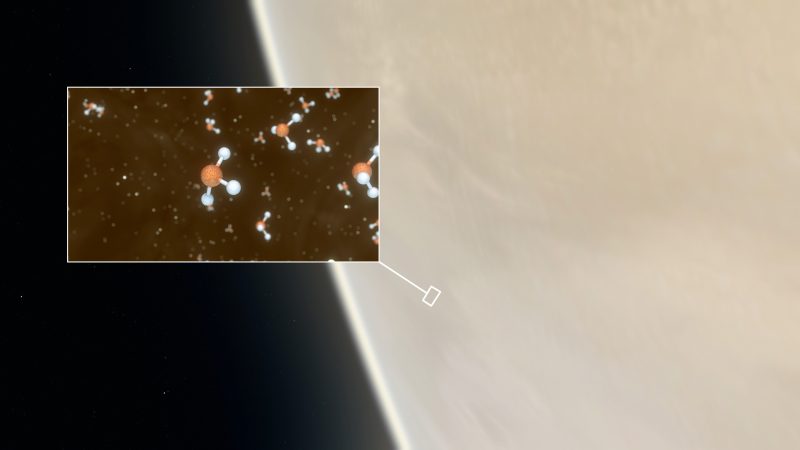
Further investigation should include controlled experiments, and computer simulations to recreate, or else refute, this abiotic process of phosphine production and further confirm the presence of phosphine in the atmosphere of Venus with specially targeted remote sensing equipment or satellites.
Another aspect is to further comb Venus’ atmosphere and possibly even surface for any other potentially present chemicals that can only be formed by life as we know it.
Tectonic activity on Venus
Speaking of volcanism: If Venus’ mantle does indeed match Earth’s, then it could also be that Venus’ surface is similarly broken into plates. If Venus indeed had tectonic plates, and this process is still ongoing, it would also explain what appear to be active volcanoes on the surface. This sort of thing is what scientists hypothesized in a recent paper.
As shown in the video, the main evidence the authors point to for potential tectonic activity on Venus is “lines,” which appear as multiple grooves along the surface, akin to the lines in the sand in Japanese gardens, present across vast regions of the surface.
These are low-lying areas in general and analogous to the lineations on Uranus’ moon, Miranda, implies movement similar to what is seen on Earth in the Arctic and Antarctic ice fields that float upon ocean water.
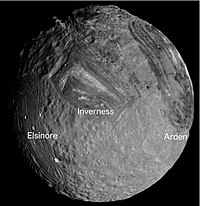
Uranus’ moon, Miranda, showing three notable clusters of its lineations. 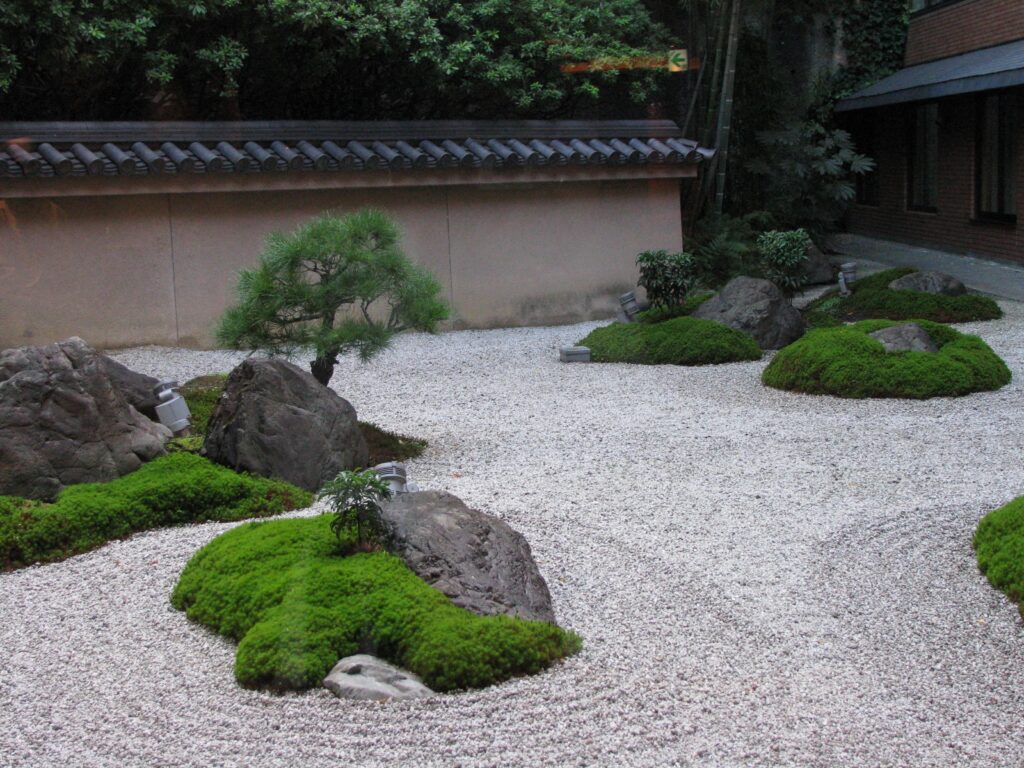
Example of a Japanese garden, showing lines in the sand. 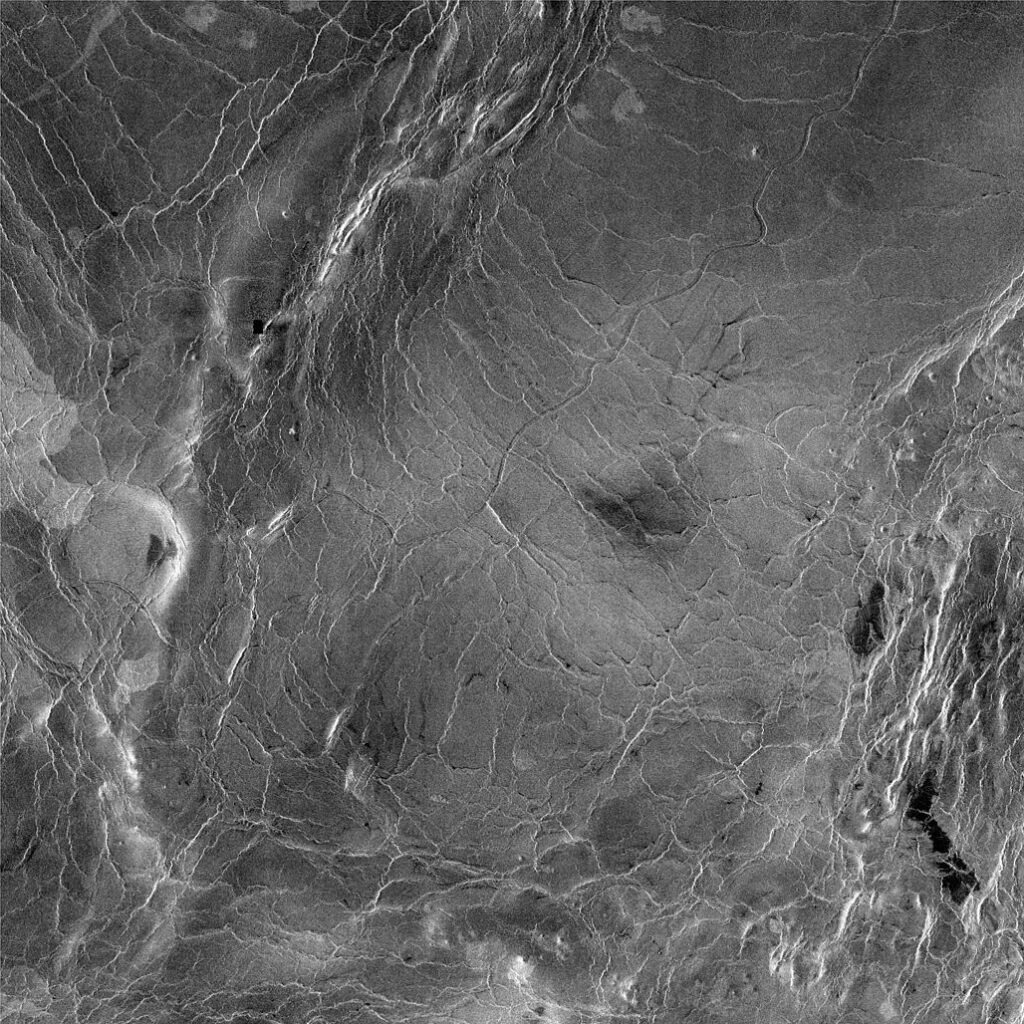
Radar mosaic from Magellan showing a 600-km-long segment of Baltis Vallis, a channel on Venus that is longer than the Nile. 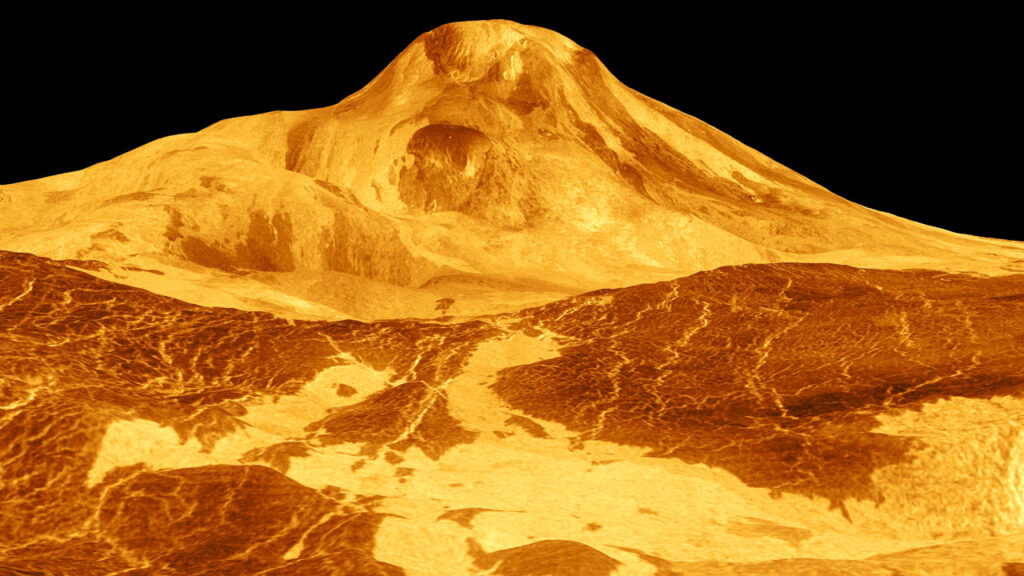
Maat Mons, a large alleged volcano on Venus, is shown in this 1991 simulated-color radar image from NASA’s Magellan spacecraft mission.
If so, simulations imply Venus’ surface to be divided up, at least in the past, into dozens of roughly cubic blocks of crust floating atop a plastic mantle and rubbing and grinding past one another. Scientists remain unconvinced whether Venus is still tectonically active to this day….
References
- N. Truong and J. I. Lunine. (2021). Volcanically extruded phosphides as an abiotic source of Venusian phosphine. PNAS 118 (29) e2021689118. https://doi.org/10.1073/pnas.2021689118.
- Gülcher, A.J.P., Gerya, T.V., Montési, L.G.J. et al. Corona structures driven by plume–lithosphere interactions and evidence for ongoing plume activity on Venus. Nat. Geosci. 13, 547–554 (2020). https://doi.org/10.1038/s41561-020.
PDF retrieved here: https://www.geo.umass.edu/courses/geo892/Corona_Venus_GulcherEtAl_2020.pdf. - Paul K. Byrne, Richard C. Ghail, A. M. Celâl Şengör, Peter B. James, Christian Klimczak, and Sean C. Solomon. A globally fragmented and mobile lithosphere on Venus. PNAS June 29, 2021 118 (26) e2025919118.
Illustration: Maat Mons, a large alleged volcano on Venus, is shown in this 1991 simulated-color radar image from NASA’s Magellan spacecraft mission.
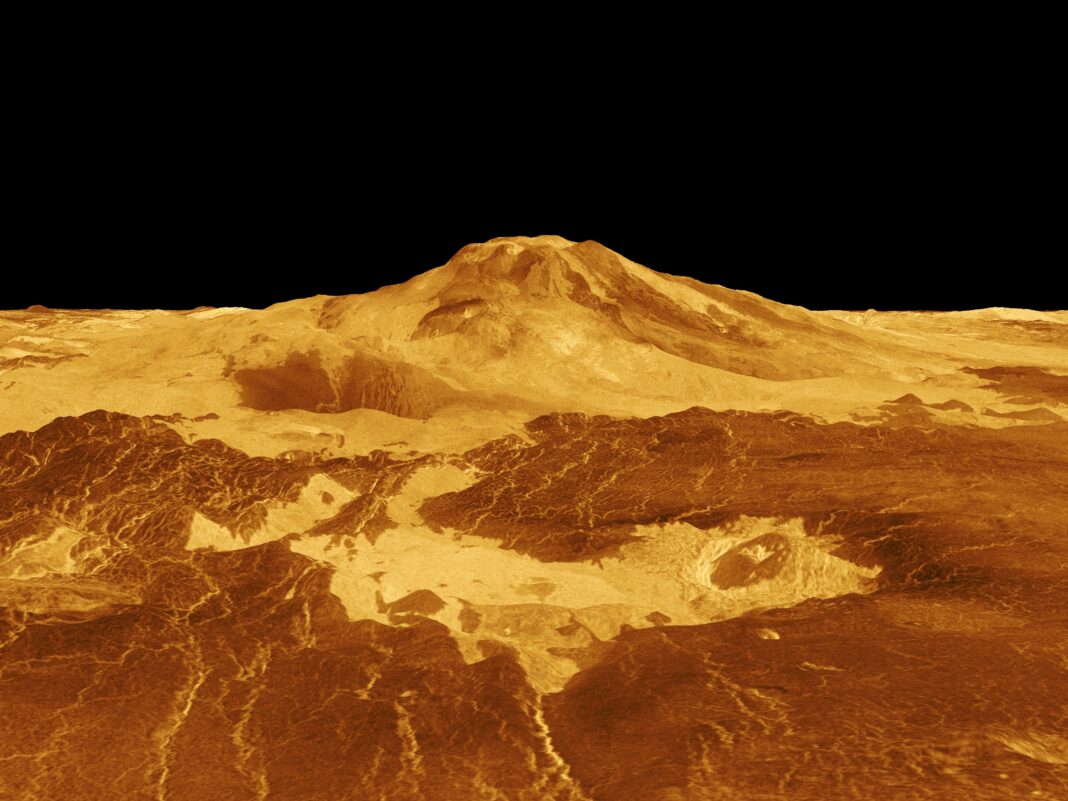

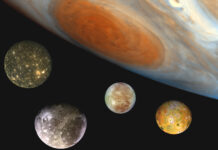



[…] post New Look at the Possible Presence of Phosphine in Venus’ Atmosphere first appeared on United Academics […]